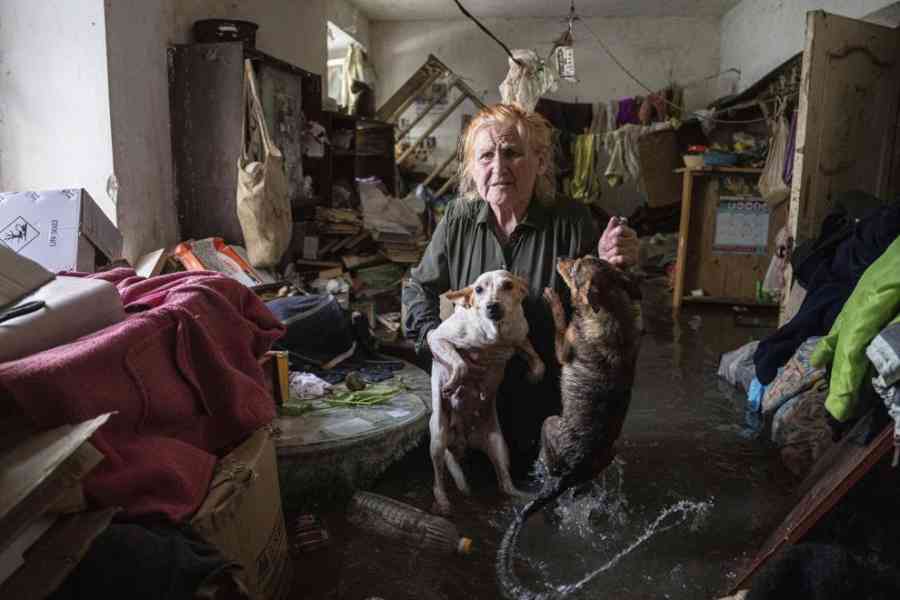Residents of the town of Antonivka looked on in horror at the roiling coffee-coloured floodwaters released by the destroyed Kakhovka dam on Tuesday, as they carried trees and debris from washed-out houses downstream, posing a grave risk to their community.
But even as water levels rose in the town and people waded about in swamped front yards rescuing pets and belongings, Russian artillery shelling was still hitting the town.
“I heard a boom, and my windows shook,” Tatyana Yeroshenko, 32, a teacher of Ukrainian, said in a telephone interview.
“What do they want from us?” she asked. “They want us to be with them, to unite us with Russia. But we aren’t happy with that idea. We will never be part of Russia.”
The head of the Kherson region military administration, Oleksandr Prokudin, said that in total about 16,000 people lived in towns and villages at risk from flooding in Ukrainian-controlled areas on the west bank of the Dnipro river. It was not immediately clear how many people were at risk in Russian-held areas on the east bank.
The shelling of communities already flooded by the burst dam shed light on the sweeping scale of the disaster of Russia’s war in Ukraine.
The Ukrainian authorities were evacuating people by train and bus on Tuesday. As the floodwaters rose, swamping houses, spilling over farm fields and blocking roads, they also flooded a zoo in the town of Nova Kakhovka, according to the city’s mayor, Volodymyr Kovalenko.
In telephone interviews arranged by a group distributing humanitarian aid in Antonivka, residents described how they had watched as rising waters crept from house to house. They kept their distance from the river bank, where Russian snipers on the opposite side have in the past fired at residents, they said.
In this area of southeastern Ukraine, where the Dnipro river forms the front line, the floodwaters were flowing into towns where tens of thousands of people had already evacuated because of the war. In Antonivka, for example, about 4,000 residents remained before the flooding Tuesday, out of a prewar population of about 13,000, according to Yeroshenko, who is also a volunteer at the aid group, which had estimated the wartime population.
New York Times News Service










